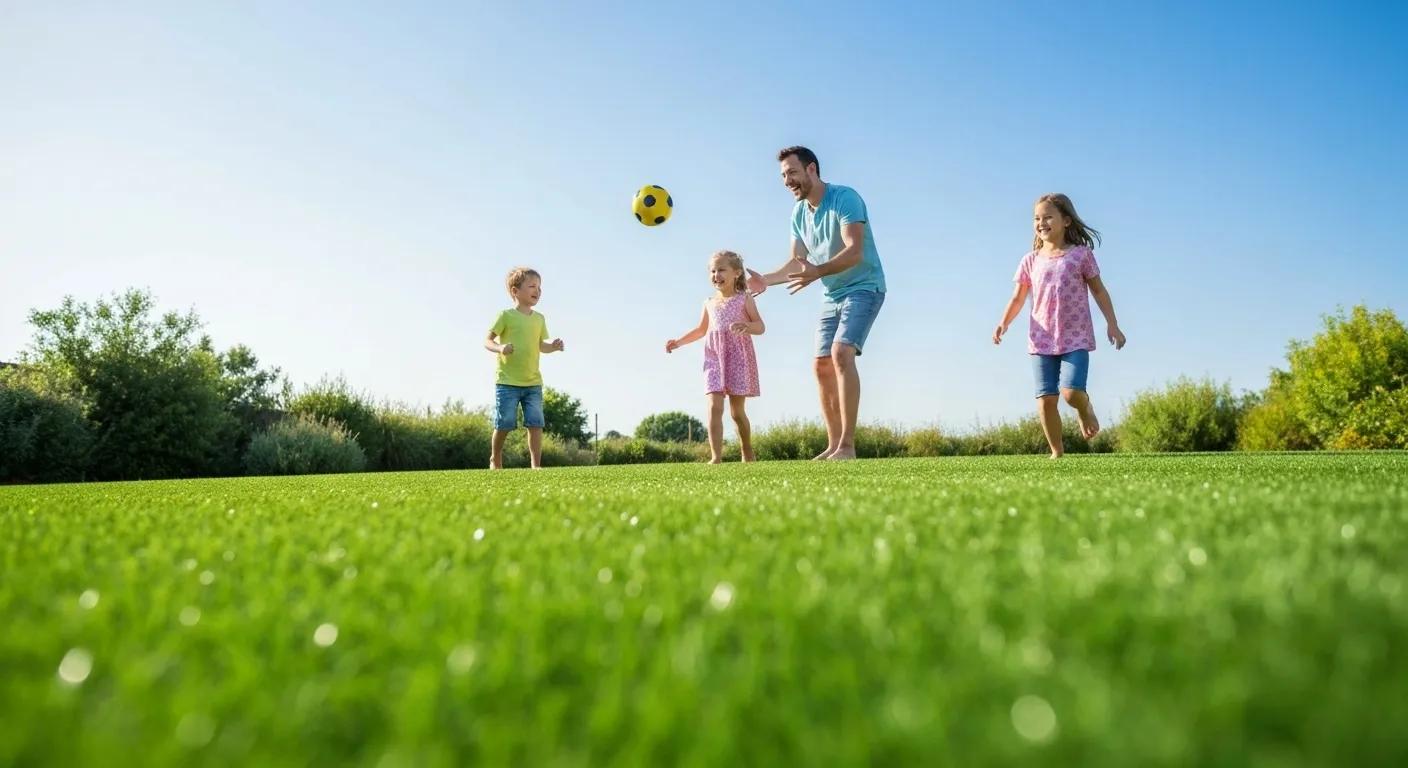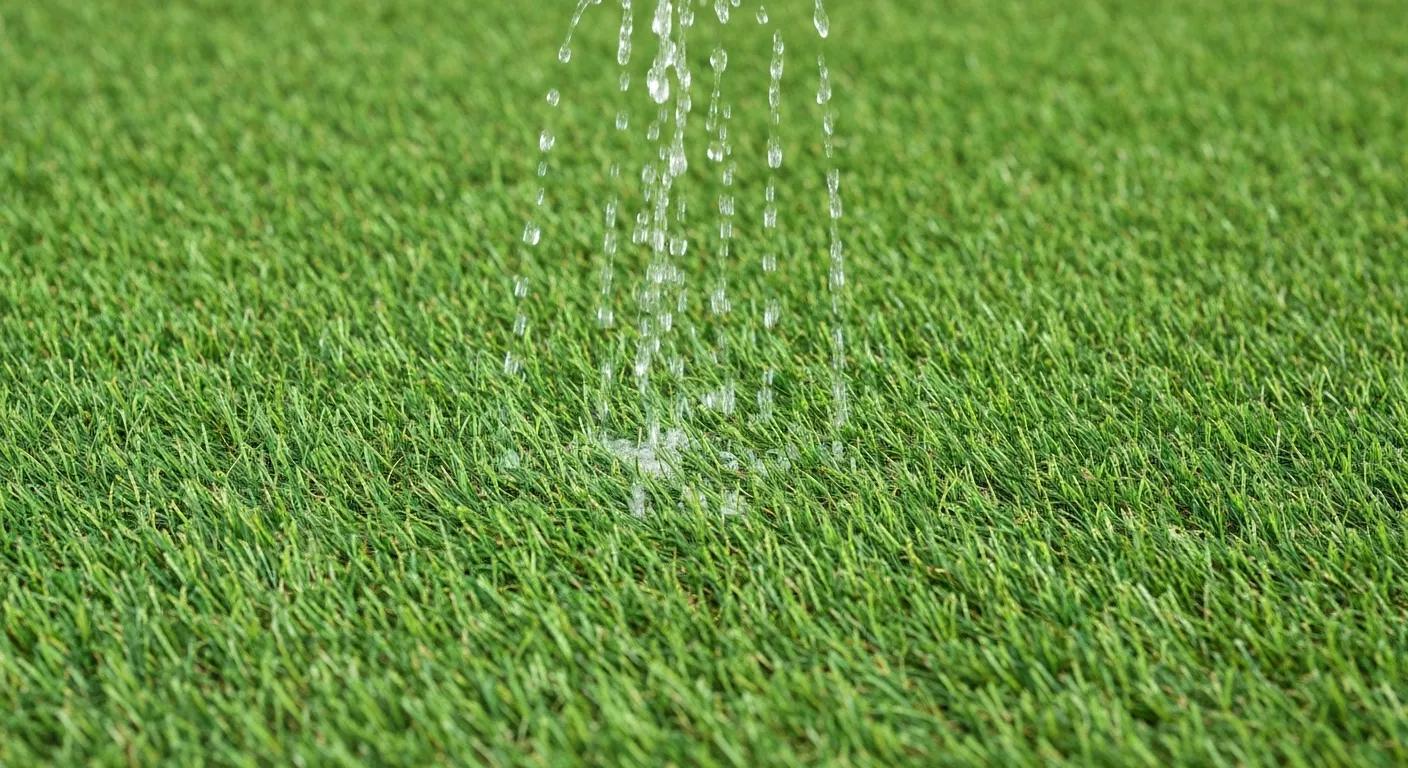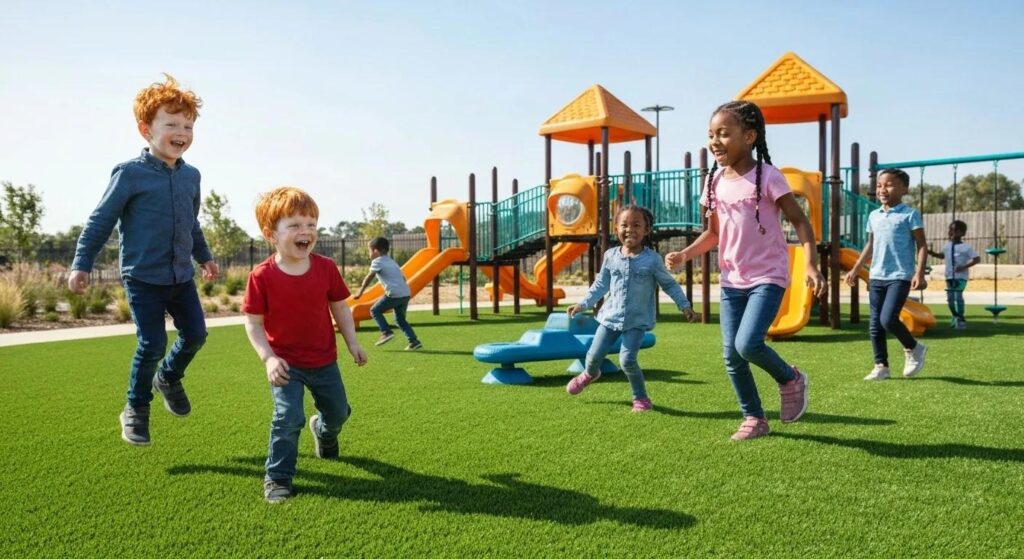
Transform your landscapes with artificial turf for year-round greenery that demands minimal upkeep and instantly boosts curb appeal. Say goodbye to water waste and endless mowing! Whether you’re a landscaper, contractor, sports facility manager, pet owner, or business owner, you can choose from specialized synthetic grass systems. We’ve got everything from odor-fighting petturfto heat-defying athletic fields, all backed by competitive bulk pricing and delivery across the nation. Dive into this guide to uncover:
By the time you’re done, you’ll have a clear game plan to select, install, and maintain artificial turf systems that nail every requirement and budget.
Artificial turf isn’t one-size-fits-all. It comes in distinct formulas, each crafted for specific environments—whether that’s prioritizing safety, durability, drainage, or sheer good looks. Knowing these differences helps you match the right product to your project’s needs and ensure it performs beautifully for years to come.

Petturf is engineered with advanced drainage perforations and special infill to neutralize odors and whisk liquids away fast. Its super-efficient drainage system lets liquids pass through at over 30 inches per hour, banishing puddles. Plus, the antimicrobial zeolite or silver-ion infill actively fights odor-causing bacteria, stopping smells before they start. Our polyethylene fibers are tested for pet safety, are lead-free, and UV-stable, ensuring a clean, resilient play zone for your furry friends.

These features combine to create a surface that’s both soft and secure, significantly reducing the risk of head injuries and standing up to constant play.
Commercial turf is built tough to handle constant use, offering incredible resilience, water savings, and a consistently great look. It’s the smart choice for busy areas.
This powerful combination delivers a maintenance-free green surface that can handle heavy foot traffic and equipment with ease.
When it comes to your home, residential turf focuses on a natural, lush look with varied blade heights and realistic thatch. Custom pile heights (from 1 to 2 inches) and dual-tone yarns mimic the beauty of natural grasses, while built-in UV inhibitors keep the color bright. A bonded, multi-layer backing stops weeds and drains about 20 inches of water per hour. Homeowners love the freedom from mowing, edging, and the joy of a soft, beautiful lawn all year long.
Heat-resistant turf uses special infrared-reflective pigments and cooling infill to keep surface temperatures up to 30 °F cooler than standard synthetic grass. It’s a game-changer for sunny locations.
These innovations make playing fields, rooftops, and patios comfortable even in the hottest desert or tropical regions.
Our eco-friendly turf systems are crafted with sustainability in mind, using soy-based backing, plant-derived yarns, and recyclable materials to minimize environmental impact. By eliminating the need for watering, mowing, and chemical treatments, these installations save an average of 55 gallons of water per square foot each year. Plus, our closed-loop recycling programs ensure that fibers and backing can be recovered at the end of their life, creating a truly circular product lifecycle.
Artificial turf offers unique advantages for everyone—saving water for homeowners, providing rugged durability for commercial clients, ensuring safety for playgrounds, maintaining hygiene for pet areas, and supporting sustainability for green projects. It delivers a fast return on investment and consistently stunning aesthetics.
Forget watering schedules and costly mowing equipment! Artificial turf cuts water use by up to 100 percent and slashes annual upkeep expenses by 60 percent. Since no fertilizers or pesticides are needed, you also save on chemical costs and labor. These savings add up fast, with most installations paying for themselves in just three to five years.
This report dives into how artificial turf helps conserve water. It points out that synthetic athletic fields can save between 500,000 and 1 million gallons of water annually, while residential lawns can save around 99,000 gallons per year. The report also touches on potential environmental concerns like microplastic pollution.
This study strongly backs up our points about the massive water savings and reduced maintenance that come with artificial turf, particularly in areas facing drought.
The secret to our turf‘s longevity lies in its UV-stabilized polyethylene fibers, tough backing systems, and wear-resistant infill. UV resistance means no fading for over 10 years, and face weights exceeding 60 oz/sq yd keep the blades standing tall. Our backing systems, reinforced with polyurethane, resist splitting, ensuring stability even with constant foot traffic.
| Turf Component | Key Characteristic | Performance Benchmark |
|---|---|---|
| Blade Material | UV-stabilized polyethylene | Color retention: Over 10 years |
| Backing System | Multi-layer polyurethane | Tensile strength: Over 200 lbf |
| Infill Blend | Silica sand + cork | Abrasion resistance: Over 1,000 cycles |
These specs mean you get a tough, reliable solution that holds up even in the most demanding conditions.
Absolutely! Modern turf systems use non-toxic, lead-free fibers and antimicrobial infills designed to keep pets and children safe. Our infill blends are certified to EN 71-3 standards, neutralizing bacteria and reducing allergens. For playgrounds, optional foam underlays cushion falls and meet ASTM impact safety standards. Plus, with no pesticides or fertilizers, there’s zero risk of chemical exposure.
With wholesale prices ranging from $1.15 to $7 per square foot (depending on pile height and features) and straightforward installation, most projects see their initial investment recouped within 3–5 years by eliminating water bills, mowing, and chemical treatments. Our bulk discounts and nationwide shipping make it even easier for large commercial or landscaping projects to see a fast ROI.
Eco-friendly turf helps cut carbon emissions by eliminating the need for gas-powered mowers and reducing water pumping demands. Our manufacturing processes are designed for recyclability, and the use of plant-based backing materials further shrinks your project’s carbon footprint. Life-cycle assessments show that artificial turf can result in up to 50 percent fewer greenhouse gas emissions compared to natural lawns over a 10-year period.
This review explores the environmental and health considerations of artificial turf. It highlights water savings and reduced environmental impact compared to natural grass in initial life cycle assessments. It also addresses concerns about potential contaminants from crumb rubber infill, noting that health risk assessments generally indicate low exposure risks for users.
This research offers a balanced perspective on the environmental footprint and safety of artificial turf, directly relevant to our discussions on eco-friendliness and safety.
The infill and backing you choose are crucial for drainage, safety, heat management, and how well your turf blades stand up. Getting these components right means your turf will perform at its best, no matter the application.
Selecting the right mix is key to balancing comfort, safety, and temperature control.
Tough backing systems prevent separation and keep your turf looking great and performing well, even under heavy use.
Choosing the right polymer means you get the perfect blend of cost, appearance, and resistance to wear and tear.
Keeping turf cool involves using reflective fibers and permeable infill. Polyethylene with infrared-reflective pigments helps lower peak temperatures, while infills like cork or zeolite enhance cooling through evaporation. Permeable backings speed up water flow, which aids cooling and reduces slip risks when the surface is wet.
A perfectly prepared base and a consistent maintenance routine are key to making your turf last longer, look its best, and stay safe.
Following each step precisely prevents shifting, wrinkles, and uneven wear.
Consistent care keeps your turf looking sharp and prevents compaction, extending its lifespan.
You’ll want to hire certified installers for projects that are complex, large-scale, or have specific warranty requirements that call for specialized tools and expertise. Professional teams ensure precise grading, perfect seam work, and adherence to all safety standards—which is crucial for sports facilities and extensive commercial landscapes.
Make sure you have a compaction plate, landscape rake, turf cutter, seam tape and adhesive, a power broom, chalk line, and edging materials. Using high-quality tools and supplies guarantees a professional finish and minimizes the need for rework.
Wholesale turf pricing varies based on fiber quality, pile height, infill type, and the volume you purchase. This allows for significant cost savings on larger projects.
| Turf Grade | Price per Sq Ft | Key Features |
|---|---|---|
| Residential A-Grade | $1.50 – $2.50 | Dual-tone fibers, natural thatch look |
| Commercial B-Grade | $2.75 – $4.00 | Heavy-duty yarns, built-in UV protection |
| Sports-Field C-Grade | $4.25 – $7.00 | Nylon blend, ready for shock pads |
Labor costs typically range from $2 to $6 per square foot, depending on how much base preparation is needed, any access challenges, and the total length of seams. Larger, simpler areas often benefit from lower per-square-foot costs, while intricate designs (like curved garden borders) will increase labor time and expense.
Artificial turf eliminates all costs associated with mowing, fertilizing, and watering, saving you up to $0.50 per square foot annually. Over a decade, these savings often surpass the initial installation cost, making synthetic lawns a smart financial move for both homeowners and businesses.
Ordering in larger quantities unlocks tiered discounts—usually 5 percent off for orders over 5,000 sq ft and 10 percent off for orders above 10,000 sq ft. Combining different turf types (like petturf and playground surfacing) in a single shipment can also cut down on shipping fees. Ordering early in the season can help secure your preferred inventory and delivery slots.
This section tackles important questions and clarifies the performance aspects of today’s synthetic grass systems.
Artificial turf surfaces can get 40–60 °F hotter than the surrounding air. However, using heat-reflective fibers and cooling infills can reduce peak temperatures by up to 30 °F, making them much safer for bare feet and pets.
This case study compares artificial turf and natural grass, raising concerns about artificial turf‘s higher surface temperatures (sometimes up to 182% hotter than natural grass), potential microplastic pollution, and the presence of PFAS. It also notes natural grass’s significant water usage as a downside and suggests natural grass may offer lower long-term costs.
This research offers crucial insights into the safety and environmental aspects of artificial turf, including heat concerns and potential chemical exposure, providing a well-rounded view of the claims made in this article regarding safety and environmental impact.
Yes! Our specialized pet and playgroundturf systems are certified non-toxic, free from heavy metals, and include antimicrobial infill to minimize odors, allergens, and bacteria, ensuring a healthy environment for play.
With UV stabilizers, robust face weights, and quality infill, well-installed artificial turf can last 10–15 years for typical residential use, and up to 8 years in high-traffic commercial or athletic settings.
Artificial turf saves an average of 55 gallons of water per square foot annually and reduces carbon emissions by eliminating mowing equipment, fertilizers, and pesticides.
Ongoing care involves occasional brushing, removing debris, topping up infill as needed, and regular rinsing. An annual power-rake can help redistribute infill, keeping blades upright and drainage efficient.
Partnering with a dependable distributor ensures consistent product quality, excellent support, and smooth logistics, no matter the project size.
Look for suppliers with a wide range of products, clear bulk pricing, quality certifications (like ISO, ASTM), and strong warranties. Responsive customer service and technical guidance are also vital for selecting the right system and ensuring a successful installation.
Nationwide shipping networks help reduce delivery times and costs by consolidating shipments. Suppliers with multiple distribution centers can often expedite local deliveries and manage lead times more effectively.
The best partners provide consultations on turf selection, detailed installation guides for specific sites, 24/7 technical support, and access to training resources. This empowers installers and project managers to achieve flawless results.
Certifications confirm that materials meet high standards for quality, UV resistance, and safety. Extended warranties (typically 5–15 years) protect against premature wear, backing failure, and seam issues, giving you peace of mind and reducing risk.
This comprehensive guide equips landscapers, contractors, and facility managers with the knowledge to select, purchase, and maintain artificial turf systems that deliver exceptional performance, safety, and cost savings—all backed by wholesale pricing and nationwide support.